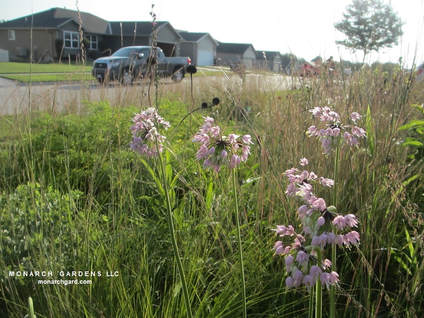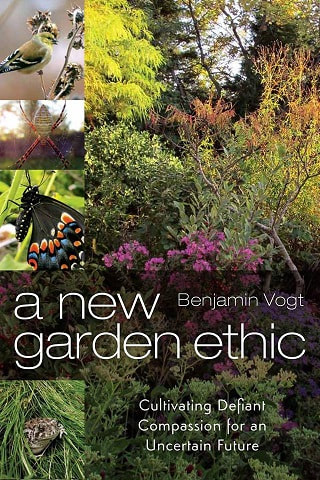1) Mature Size
Yeah, we all look at the plant tag and hopefully consult several reputable print and online sources, but mistakes happen either through impatience (I want a big plant now so I'll buy the bigger pot) or bad evidence (plant tags might list the mature size at 10 years old and in a different region with different site conditions -- but what does it look like at 20 years in your city in your yard?).
And then what if you choose an adaptable plant, one that can take dry / wet / shady / sunny? It will absolutely grow differently in one set of circumstances even if it does fine in another... several sedge species come to mind that are bigger and bushier in wet sun and loamy soil, yet thinner and short in dry conditions. Trees certainly do this, too. And that all makes sense, right? Flowering plants tend to bloom more with additional sun; even if it's a shade plant more ambient light or a brief period of direct light will alter that plant's growth characteristics.
There are lots of native plant species with large ranges across the U.S. -- little bluestem and black-eyed susan for example. But Nebraska is different than Pennsylvania or Oregon or Georgia, which is why there are genetic differences in local plant populations that help them evolve to do well in that place. Keep in mind, that place isn't just geographical, but site specific from soil to drainage to wind to rainfall to herbivore use.
How many times do you really, REALLY think about how or if that new plant is going to spread or not? Will it self sow like crazy or lightly? If it self sows do seedlings struggle in a thick bed with lush plant layers? How fast do seeds germinate? Or does it spread by runners, and if so, will it spread a lot slower in clay (dry or moist) than in loam or silt? Will it spread just in its immediate area or will you have 100 new children in a year all over the neighborhood?
Maybe you need to use less of one plant and more of another, depending on how they spread. Less black-eyed susan and little bluestem, more butterfly weed and rattlesnake master. If this feels complicated that's because IT IS, but the first step to uncomplicated plant decisions is to learn what to look for, and we're doing that right now.
3) Community
So you've got an aggressive plant that sends out runners -- if it's planted among other species that also run, will they all keep each other in check? Maybe. But unless you have a large area to plant I wouldn't risk the experiment. It's better, especially in smaller urban gardens, to choose plants that are more behaved clumpers or that lightly self sow nearby, as seedlings are easy to remove. Having a collection of behaved clumpers helps you maintain a "clean" or "designed" appearance for longer, as things aren't getting too out of control that you can't stay on top of it.
I mentioned two more behaved native plants above, but others can work too: prairie alumroot, pale purple coneflower, blazingstars (if in a thick bed), aromatic aster, and definitely not giant blue hyssop / anise hyssop. Nope.
Once you decide on using all or mostly clumping plants, the next step is to consider their mature size in your site conditions. Choosing a majority of plants with similar heights at least can give your garden the appearance of tidiness many look for when walking by and judging you (sarcasm -- sort of). It's ok if they spread out a little and fill in, heck, you want that so the ground is covered which helps in fighting weeds and reducing the need for wood mulch. Maybe you include a few species that shoot up twice the height of the majority around them just to add some architectural flare. If you are planting in clay soil it's more likely your native prairie plants are adapted to do well in such "harsh" soil, whereas if you put them in rich loam tilled to death they might grow gangly with a short lifespan. Nothing helps keep an aggressive plant in check like clay soil and a lack of rain.
Some call this "management" or "maintenance," some "murder." In this case murder is totally cool. Rip out seedlings if there are too many. Take out a few specimens if they are overwhelming the space. Do you really need 15 of that one flower or will 5 look more put together and still provide a beacon for pollinators? The balance between aesthetic design for humans and ecological design for the site and wildlife can be tricky and precarious, but we still have to strive for it in highly populated urban areas where human and animal cultures mingle. Just remember that no matter how much editing you perform, you're still doing well by nature when you have designed and managed wildness using native plants.
5) Copy Nature
Finally, visit a local "wild" area near you that approximates your landscape and site conditions, whether that's a prairie, woodland, desert, or lakeside. Let your eye wander over the space until it settles and focuses in on a particular vista or area. Is the space "weedy" and "messy?" What provides coherence that makes you find it pleasing, comforting, exciting, welcoming? What plants are used, how are they grouped, what plant communities are they a part of it, how are they layered among each other? This will begin to give you some clue about how plants work together, what wildlife will recognize and use, and how to tap into nature's design while perhaps bumping it up a notch in a man-made ornamental landscape (for example, that meadow might have just a few butterfly weed among sideoats grama, but maybe in your landscape you could double the flower number).
Next time you plan a new garden bed make sure to do your diligent research -- it will save you time, headache, and some maintenance issues. And hey, hiring an expert to help you doesn't hurt either, and might even save you money and stress over time.




 RSS Feed
RSS Feed

